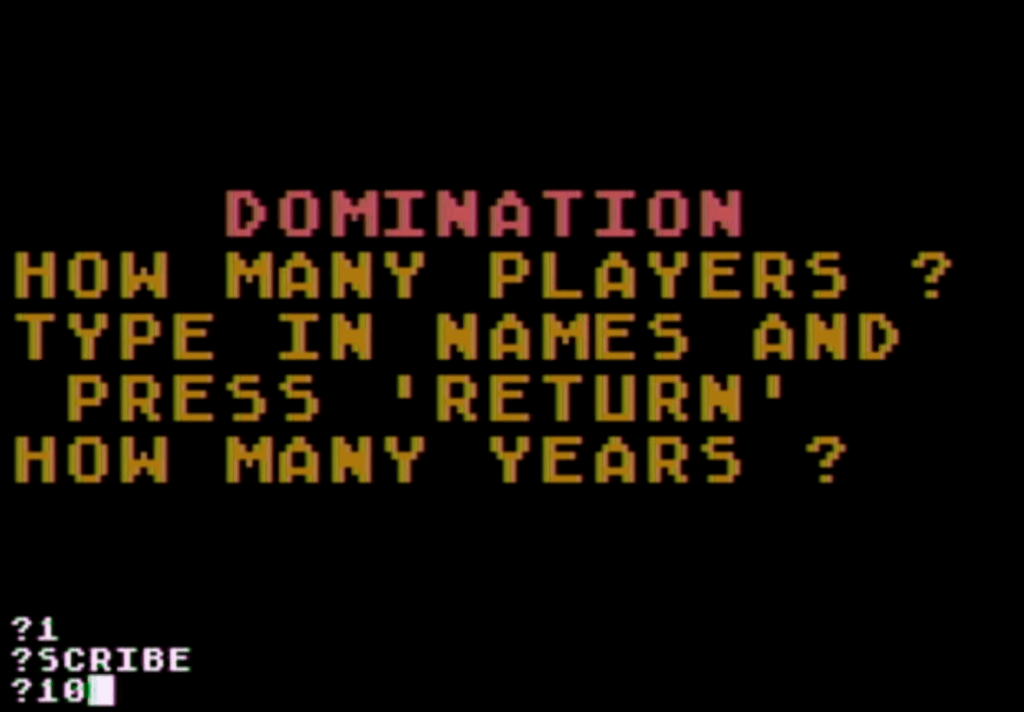
So, Lieutenant Narwhal, did we defeat the decadent nation of Iwwanawa ?
We crushed them, general !
Losses ?
One hundred percent, general !
I mean, what were OUR losses, Lieutenant Narwhal ?
That’s our losses, General. All our divisions vanished when we conquered Iwwanawa. They always do.
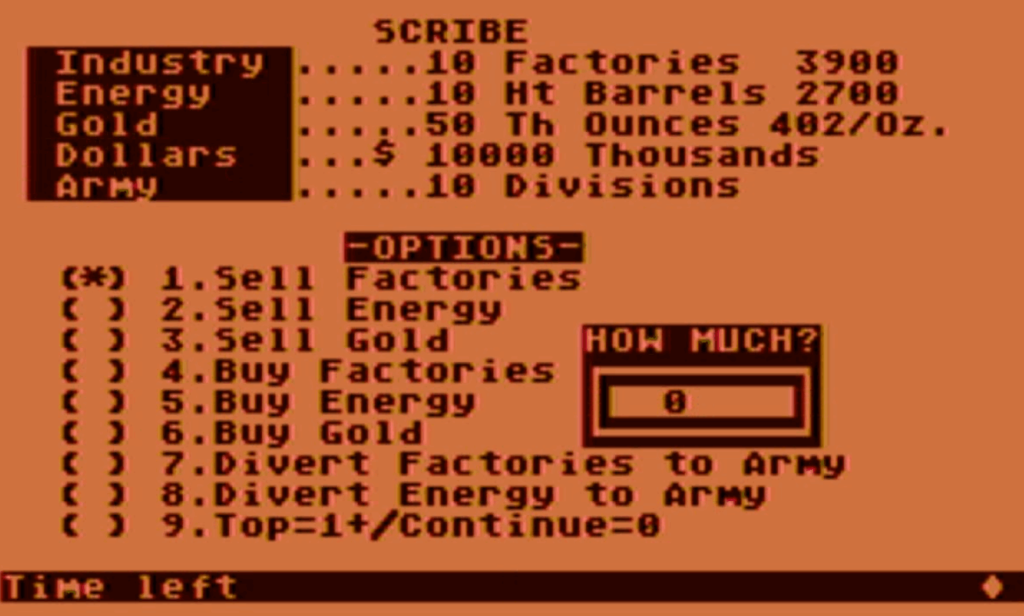
Domination is Alan M. Newman’s first video game – and his only game that can be construed as a wargame, or at least a strategy game. While Newman had a strong background in designing boardgames, he would only develop three more video games, including the somewhat popular platformer Tutti Frutti, and then decided not to pursue his career in video games as he got frustrated by rampant software piracy.
The game was published by the Atari Program Exchange in 1981, and later republished in 1982 by Artworx. Sales figures are unknown, but Newman claims he received $3000 upfront from Atari for ranking first in some “Atari Star” competition. Domination is a multiplayer game first (up to 5 players). It is designed to be played with paddles only, even allowing two players to play at the same time in some specific game feature that was cut from the single player.
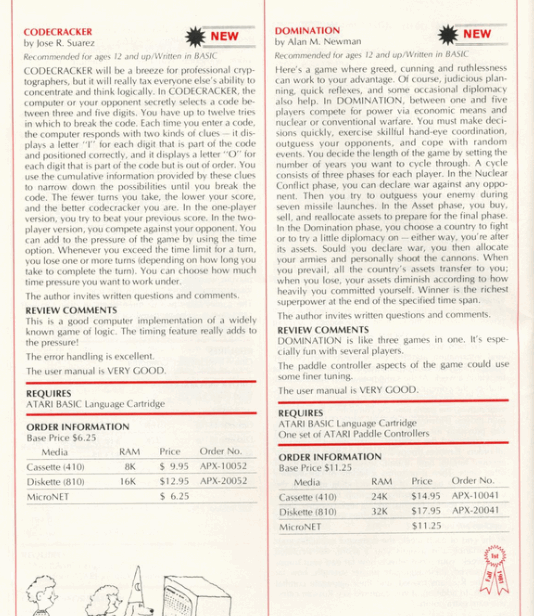
The game always starts in 1981. The first screen is pretty packed, but it has only 4 elements you really care about : amount of Industry, amount of Energy, cash and army size.
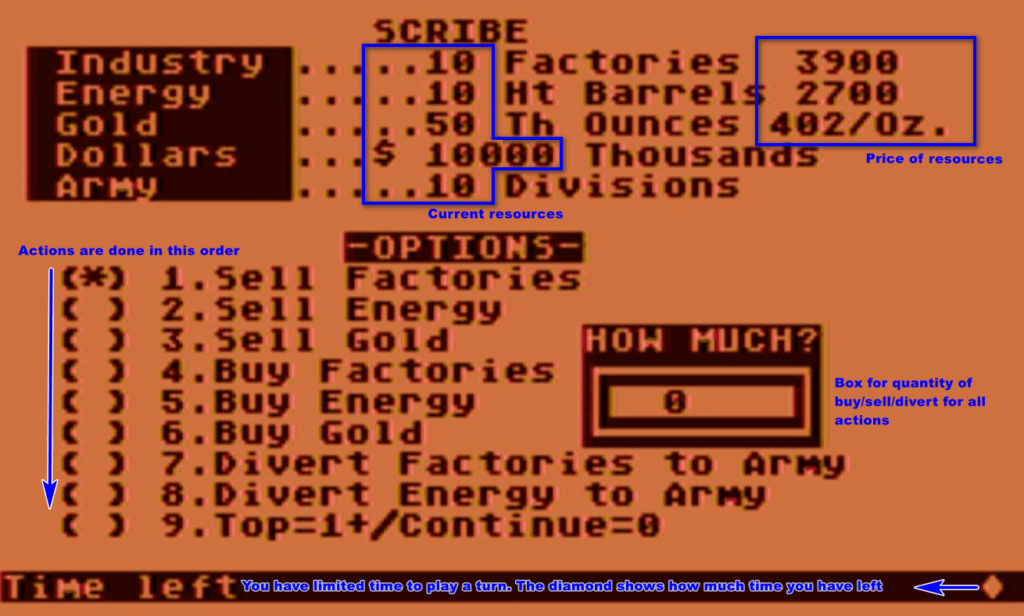
Each turn, you need to divert factories and energy (losing both in the process) to your armies. You need to divert at least half as much of factories and energy units as you have divisions to maintain your army size. If you want to grow your army, you can invest up to as much factories and energy as you have divisions – this grows your army four times.
Apart from that, you have dollars which allow you to buy industry and factories, and gold which has no purpose except speculative (its price tends to grow overtime, though sometimes it goes down).
First year, I decide to invest all my factories and all my energy into my armies, creating 40 divisions !

After that, the game moves to the “domination” phase, as the manual calls it.
My advisors gave me a list of countries. I could either try diplomacy with one of them, and maybe receive a one-off amount of gold – because that’s how diplomacy works. Or I could annex one of them. The list of countries came with how much taxes, industry and energy they would generate if I annexed them, and how many divisions would defend them.
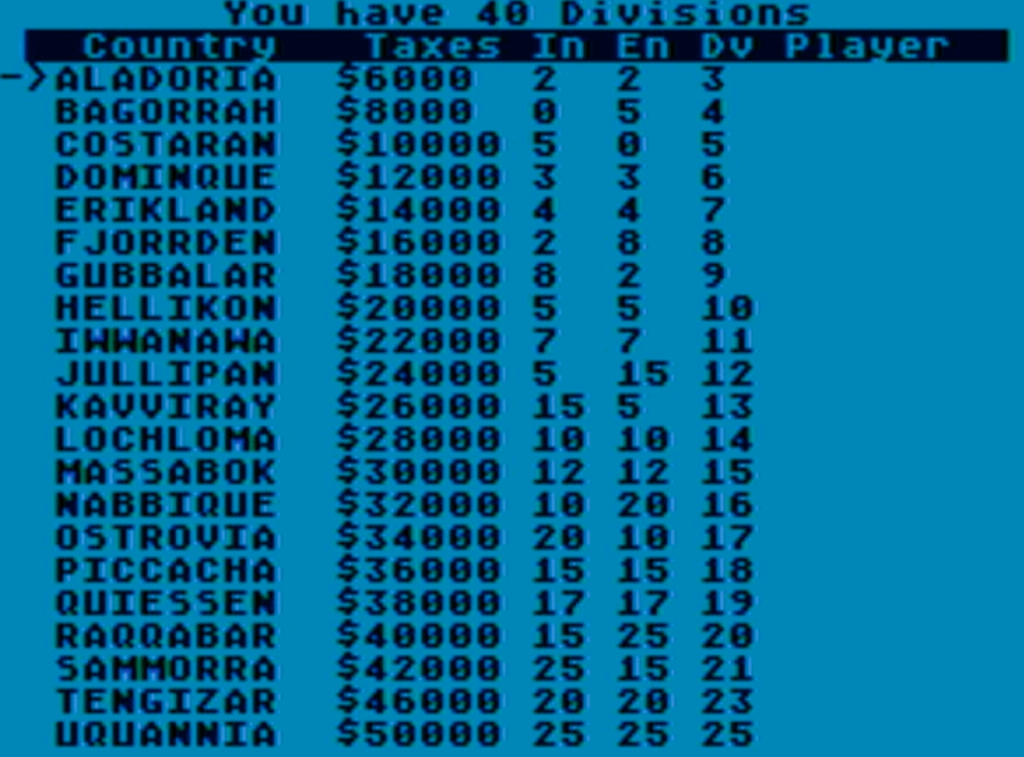
With 40 divisions I was already the top-dog, but there is a strong defensive advantage in this game. Moreover, all divisions committed are lost.
I picked Iwwanawa, because it had a funny name and because I did not want to commit more than 30 divisions.
And so the battle started :

The number of divisions you bring is how much time you have for the “battle”. The divisions the enemy has in defense is how many targets you need to destroy. The time you do not use is not refunded.
And… that’s it. Welcome to 1982 !
In 1982, I start with 7 energy and 7 industry, gift from my new vassal Iwwanawa.

I bought 3 factories, 3 energy and with that funded 40 divisions again, which I used to attack the smallish Hellikon with 25 divisions, leaving me 15 divisions to scale up in the future.
In 1983, the 15 surviving divisions became 60 divisions, 40 of which I used against Massabok :
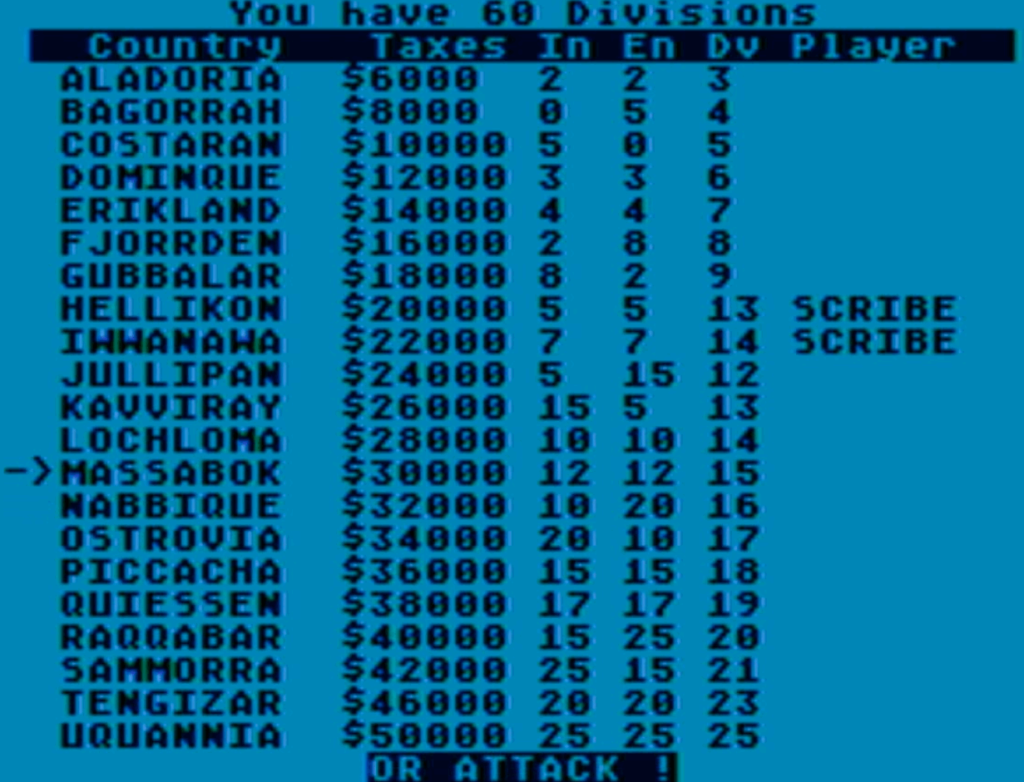
And then, in 1984, the 20 surviving divisions became 80, 60 of which were used against Uquannia.
You get the drift. After that, I went down the list (Tengizar, Sammorra, …). By 1989 – the last turn, I had so many divisions I decided to disband most of them.
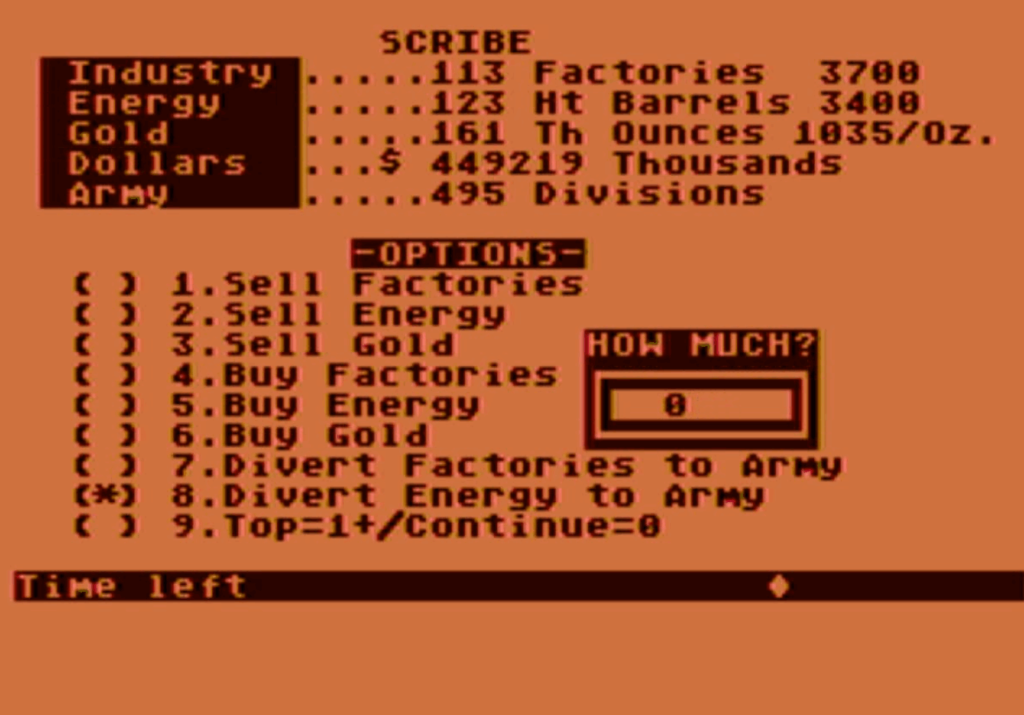
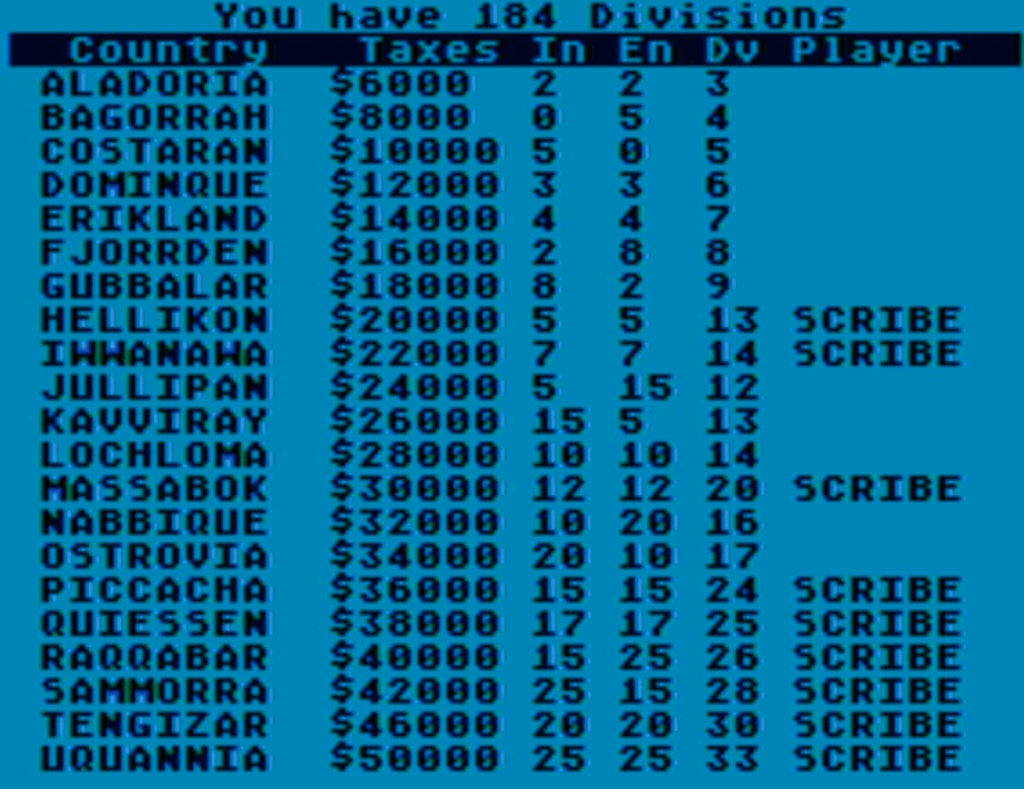
Ultimately :
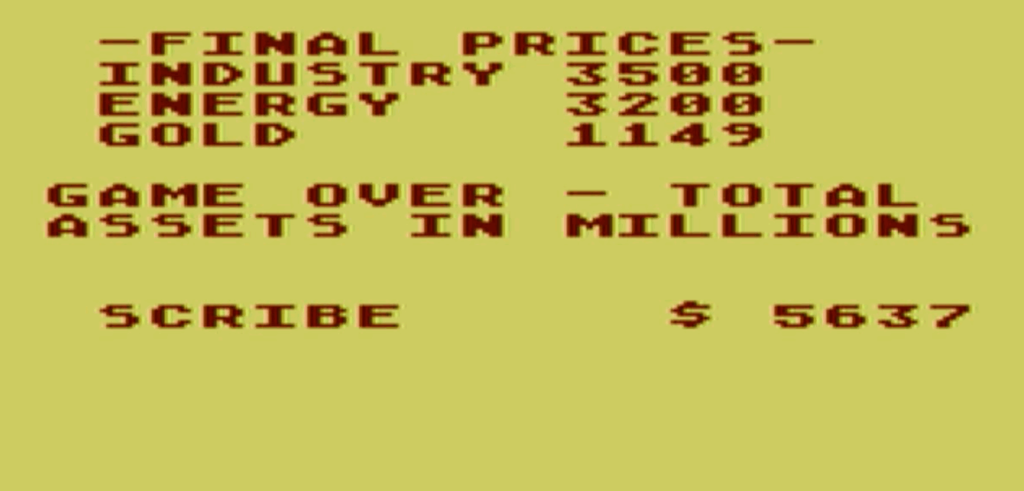
Is that good ? Is that bad ? I don’t know. It is really a game to play with friends rather than alone.
Ratings & Review
Domination by Alan M Newman, USA
First release : Fall 1981 on Atari
Tested on : Atari emulator
Total Hours Tested : 1
Average duration of a campaign: 20 minutes
Difficulty: Easy (1/5)
Would recommend to a modern player : No
Would recommend to a designer : No
Final assessment: Totally obsolete as a single player game
Domination is a primarily multiplayer game that only made it to this blog due to being wargame-adjacent and having a single player mode.
The game had two versions :
- The initial APX version in 1981,
- The 1982 version published by Artworx that seems lost. According to the manual, it had a few differences :
- Up to 6 players (instead of 5),
- Some minor UI improvements,
- It removed “recessions”, an event with 25% trigger chance which destroys 30% of your industry at the beginning of the year,
- It has a marginally different balancing for nuclear wars, the multiplayer-only feature,
- It had a slightly different combat phase, where instead of showing a dot to shoot at, it used a missile that you had to intercept before it touches either your troops on the ground, or your own launcher.
None of those differences seem really relevant anyway, except if I ever had 5 friends at home willing to play a 1982 game.
A. Immersion (Settings & Aesthetics)
The game does not even try anything in this category – which is consistent with Newman’s preference for abstract board games.
Cannot be rated.
B. UI , Clarity of rules and outcomes
Domination is a menu game with pretty deterministic outcomes. The game works fully with a paddle, which means there is one button to confirm and you can push left or right to increase / decrease value. Still, it is not perfect. The default values are often absurd so you must increase / decrease them every single time (eg, the game always suggests to invest 100 divisions or so in every battle), there are two different commands to divert factory/energy to army when you have exactly 0 reason to divert a different value since the difference would be lost, …
Not much of an issue but when you are a menu game I expect said menus to be better thought-out.
Rating : Bad.
C. Systems
Not much to add to the AAR, except maybe multiplayer nuclear wars.
In multiplayer, each player has 25% chance to be offered to start a nuclear war with another player at the beginning of his turn. Nuclear wars is basically a betting game with 7 rounds, where each player bets some of his 48 nuclear missiles (+1 for every 5 divisions he has). Whoever loses the most rounds loses a significant amount of their resources.
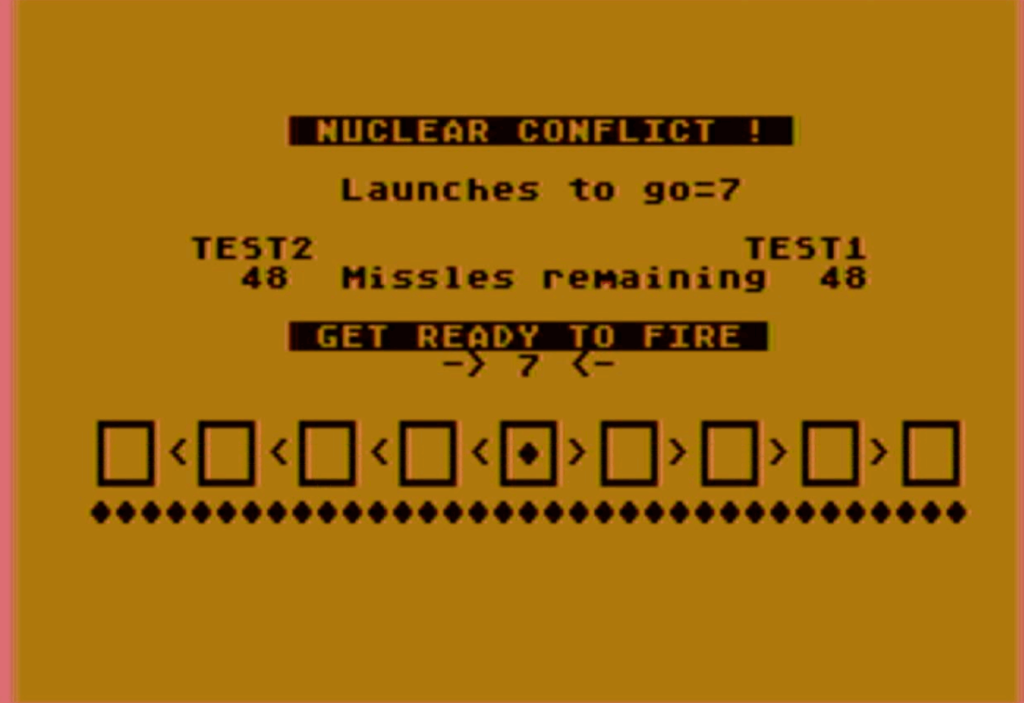
Rating : Terrible (in single player).
D. Scenario design & Balancing
No randomization at all, except on prices.
Cannot be rated.
E. Did I make interesting decisions ?
No. In multiplayer, I suspect there is a lot more tension, but in single player there is no resistance to your action anyway.
F. Final rating
Totally obsolete as a single player game.
The game is in a fairly similar situation to Galactic Empires/Galaxy : it is meant to be a multiplayer game to which a single player mode was added because it was pretty much free in term of development time.
Contemporary reviews
Sadly, I could not find any reviews for the game – contemporary or not – the generic name did not help. Despite its award, it cannot have been too popular : it is fully missing from the 300-page long 1983 Book of Atari Software.
Since this review was short, I will also cover quickly the 1979 Sahara Warriors by Instant Software, for Apple II. This game was on my list of missing games, but the Data Driven Gamer showed me how to run the cassette version that I thought was not working, so I could test it after all.
Just like Computer Conflict, Sahara Warriors is actually two different games loosely connected thematically:
- Commando
Commando is a single-player abstract game where you need to drop your pawns to surround the one enemy pawn, as your pawns block its movement. The trick is that you only know the position that the enemy pawn had the previous turn, and if you drop one of your pawns on its current position you lose it. Of course, you have a limited number of pawns.
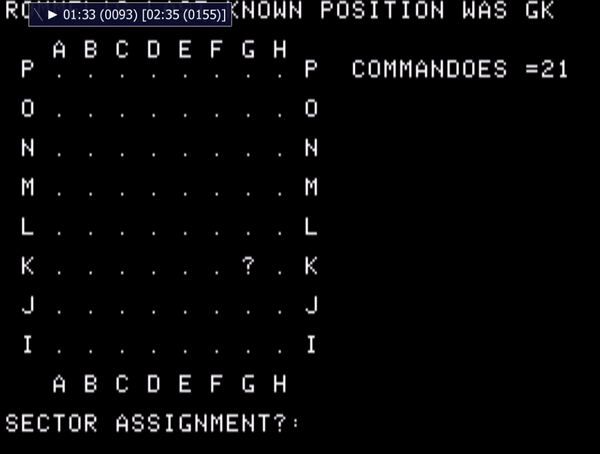
Why “Commando” then ? Well, the game pretends that you are trying to capture a German general in North Africa : Guderian in the [trivially] “easy” mode – he can only move vertically and horizontally – and Rommel in “hard” mode who can move diagonally.
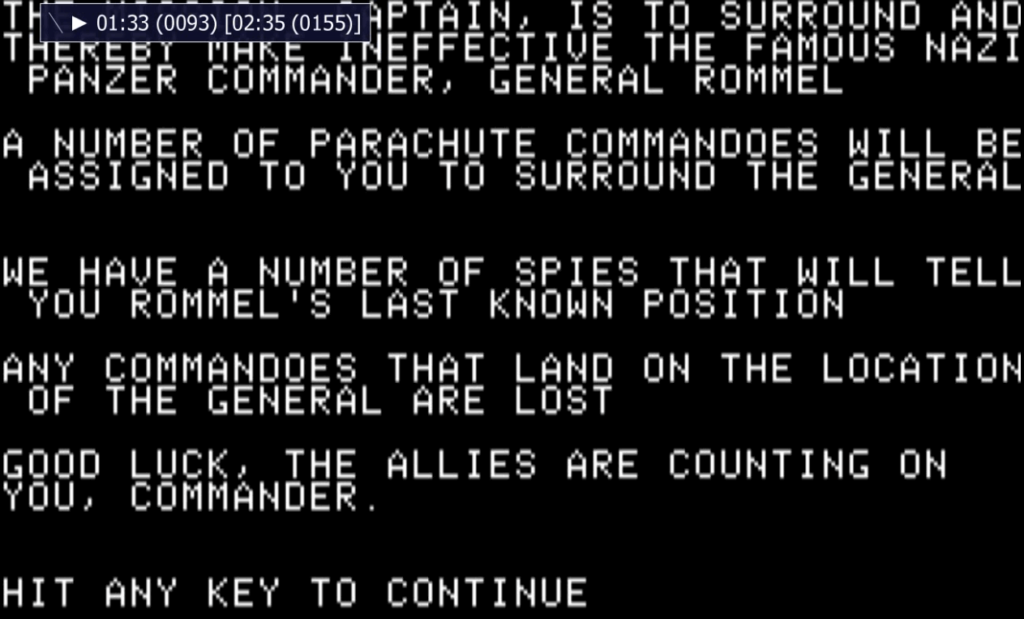
Let’s forget for one minute that Guderian never participated in the Desert War and was probably a better general and a more valuable catch than Rommel ; Rommel is just more famous.
The game also has a couple random events that happen from time to time : sometimes your planes get shot down and you lose pawns commandos , and some time a patrol removes one of your pawns commando units. That’s pretty much all there is. I spent 15 interesting minutes playing the game, but it is definitely not a wargame.
- French Foreign Legion
French Foreign Legion is a two-player game with four modes :
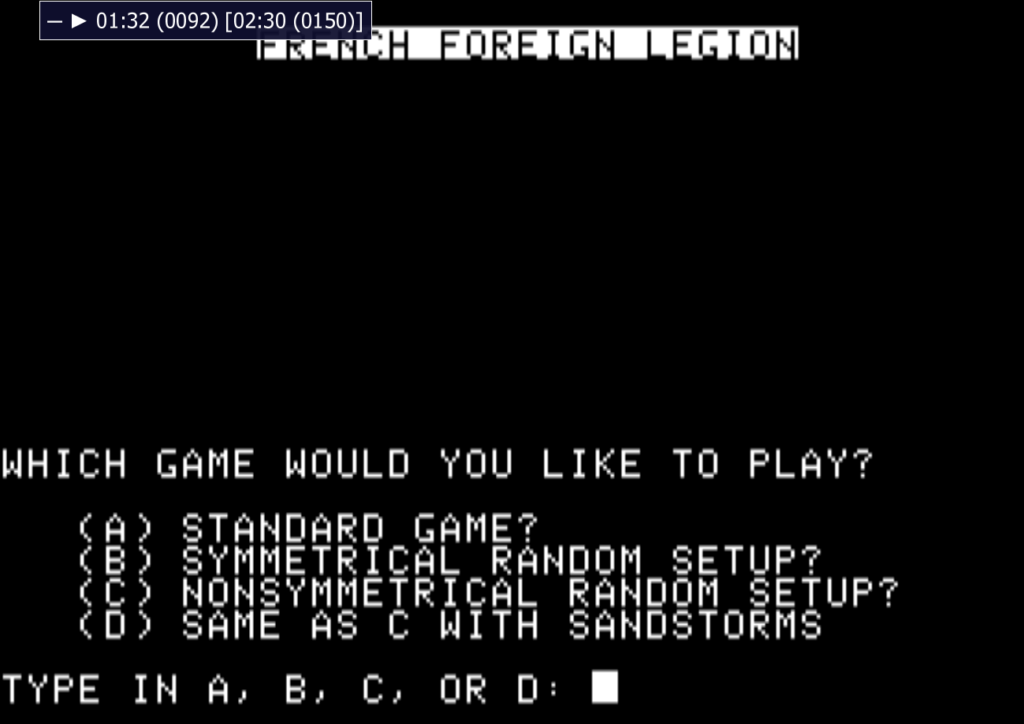
The “standard mode” opens on this view …
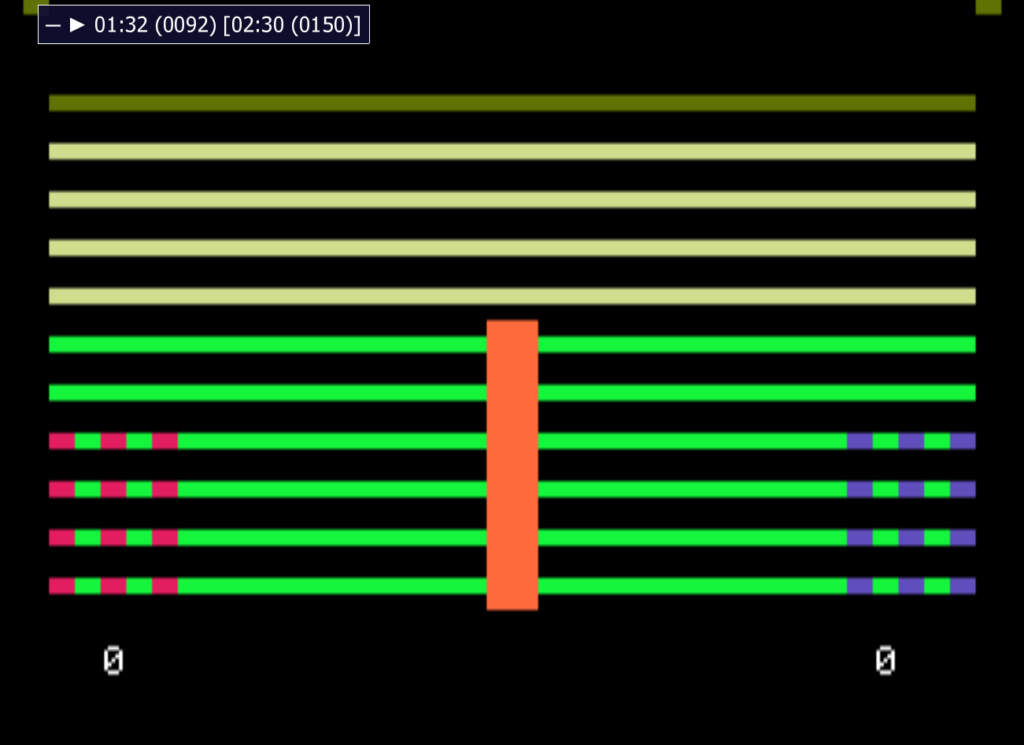
… and that’s all I can say about this game because neither me nor the Data Driven Gamer managed to emulate the paddles in MAME. In any case, it also looks like an abstract game with a thin theme overlaid on it.
Commando is not a wargame, not even wargame-adjacent, and French Foreign Legion is two-players only, so I can scratch Sahara Warriors from my list and move on.
4 Comments
The combat system looks extremely boring and monotonous.
Indeed. It’s too tightly packed and has too much information.
I believe it is mostly supposed to force the player to “bet” how many divisions they want to invest in a conquest, while letting the player have some limited skill-based role in the output. But yeah, it is not fun.
Iwwanawa…the name strikes terror